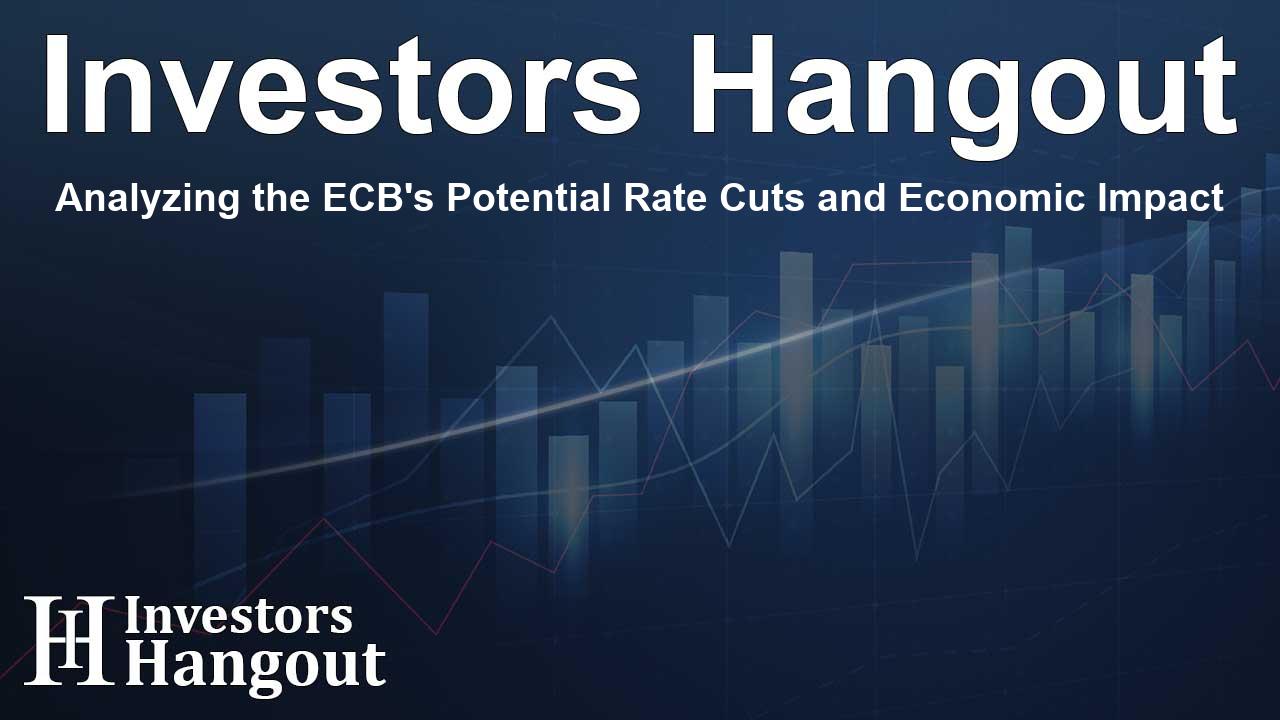Analyzing the ECB's Potential Rate Cuts and Economic Impact

Impact of European Central Bank Rate Decisions
The European Central Bank (ECB) appears set to make more considerable rate cuts than what markets currently foresee, according to insights offered by analysts from BCA Research. This divergence stems from BCA's assessment that deteriorating economic conditions in the Eurozone, particularly a rise in inflation and growing risks of recession, will compel the ECB to adopt a more aggressive stance on rate cuts than anticipated.
Current Market Expectations Versus BCA Insights
Markets currently undervalue the extent of monetary easing that may be necessary, especially as we look towards 2025 when economic hurdles are projected to grow. The ECB has already begun to decrease its deposit rate from 3.75% to 3.5%, with another anticipated cut expected soon.
Gradual Approach to Rate Cuts
Following the introduction of the ECB's new strategy, the initial cuts may seem gradual. However, indications such as the €STR curve suggest that market players are leaning towards earlier cuts, with about a 50% chance for an October adjustment. BCA Research, however, argues this expectation is overly optimistic, rooted more in speculation than in solid economic foundations.
Indicators Against Immediate Rate Cuts
Several significant indicators work against the likelihood of an immediate cut. For example, services inflation is currently at a high rate of 4.2%, largely driven by rising costs in recreation and insurance sectors. While this inflation may decline over time, it provides the ECB with sufficient justification to hold off on additional rate reductions until later in the year.
Inflation Pressures and Labor Market Trends
Despite high inflation rates, BCA forecasts a cooling of these pressures. Unit labor costs, which previously bolstered inflation rates, are beginning to stabilize. Notably, the contribution of unit profits to overall inflation has dropped, indicating a gradual easing of inflationary strain.
Labor Market Indicators
Labor market indicators also reveal a softening trend. Wage growth, which is a crucial driver of consumer spending, is slowing down, and job creation statistics have seen a downturn. Particularly, the employment component of the Eurozone's Composite PMI has dipped below the critical boom-bust line, reflecting weakening labor demand.
Manufacturing Sector and Economic Outlook
In the manufacturing sector, disinflationary forces are expected to persist. The capacity utilization in this segment has returned to levels reminiscent of the Sovereign Debt Crisis, showing significant contraction potential. BCA suggests the market is misjudging the ECB’s necessary interventions in 2025, as the €STR curve anticipates a policy rate of 2% by mid-2025, focusing on an optimistic economic outlook.
Challenges from the Global Economy
Concerns about the global industrial outlook contribute further to BCA's perspective. For instance, the Global Manufacturing PMI has recently dipped below 50, indicating a contraction. Furthermore, a slowdown in residential investment in the US also casts a shadow on European economic prospects, creating ripple effects through trade and investment channels.
Consumer Confidence and Future Recession Risks
Internationally, consumer confidence trends are diminishing. Although real wages continue to grow, they are failing to keep pace with increasing household savings, indicating a shift towards a more cautious spending approach. If employment situations persist in declining, consumption will likely taper off, laying the groundwork for a potential recession in the Eurozone.
Projected ECB Actions and Investment Strategies
In light of these emerging patterns, BCA anticipates that the ECB will enact more decisive cuts than what markets are currently projecting.
Neutral Interest Rates and Future Cuts
With estimations placing the Eurozone's neutral real interest rate (r-star) between -0.5% and 1.1%, and a median nominal neutral rate around 2%, BCA contends that significant cuts may drop the deposit rate below 2% by mid-2025, especially during a recession.
Investment Recommendations
BCA Research offers crucial insights regarding investments. Their bullish stance on German bunds is attributed to the expectation that deeper-than-anticipated cuts will lower yields. BCA’s principle of bond investing suggests that when central banks lower rates more than anticipated, yields on bonds will typically drop, suggesting lucrative opportunities ahead.
Conclusion: Navigating Economic Uncertainty
As for the euro, it’s likely to experience downward pressure with the outlook on the European economy continuing to yield challenges. Historical trends imply a weakening euro once the US Federal Reserve begins its rate cuts, amidst a backdrop of heightened global economic challenges.
Cautious Perspective on European Credit
BCA remains wary of European credit markets, advising investors to take a conservative approach. Given the rising risks of recession and less favorable economic outlooks, European credit may not perform as well compared to alternative asset classes.
Frequently Asked Questions
What is the ECB's current deposit rate?
The ECB's current deposit rate stands at 3.5%, following cuts from higher rates earlier this year.
What are the key reasons for potential ECB rate cuts?
BCA Research cites worsening economic conditions, rising inflation, and recession risks as central factors necessitating rate cuts.
How does the labor market impact inflation?
Slower wage growth and weakening job creation reduce inflationary pressure from labor markets, contributing to overall inflation trends.
What are the projections for the euro in light of potential ECB actions?
Analysts expect the euro may weaken due to anticipated rate cuts and ongoing global economic challenges.
What strategies does BCA recommend for investors?
BCA suggests a bullish approach towards German bunds while recommending caution in European credit markets due to rising recession risks.
About The Author
Contact Riley Hayes privately here. Or send an email with ATTN: Riley Hayes as the subject to contact@investorshangout.com.
About Investors Hangout
Investors Hangout is a leading online stock forum for financial discussion and learning, offering a wide range of free tools and resources. It draws in traders of all levels, who exchange market knowledge, investigate trading tactics, and keep an eye on industry developments in real time. Featuring financial articles, stock message boards, quotes, charts, company profiles, and live news updates. Through cooperative learning and a wealth of informational resources, it helps users from novices creating their first portfolios to experts honing their techniques. Join Investors Hangout today: https://investorshangout.com/
The content of this article is based on factual, publicly available information and does not represent legal, financial, or investment advice. Investors Hangout does not offer financial advice, and the author is not a licensed financial advisor. Consult a qualified advisor before making any financial or investment decisions based on this article. This article should not be considered advice to purchase, sell, or hold any securities or other investments. If any of the material provided here is inaccurate, please contact us for corrections.
